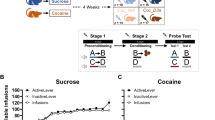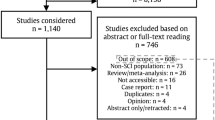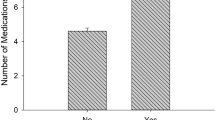Abstract
Statins are drugs that have been used for decades in humans for the treatment of hypercholesterolemia. More recently, several lines of evidence demonstrate that statins, in addition to their peripheral effects, produce a wide variety of effects in the brain and may be beneficial in neurological and psychiatric conditions. In this study, we allowed rats to self-administer cocaine for several weeks and, at the end of self-administration training, we treated them with low doses of statins daily for a 21-day period of abstinence. Chronic administration of brain-penetrating statins, simvastatin (1 mg/kg) and atorvastatin (1 mg/kg), reduced cocaine seeking compared with vehicle, whereas administration of pravastatin (2 mg/kg), a statin with low brain penetrability, did not. Importantly, the effects of brain-penetrating statins persisted even after discontinuation of the treatment and were specific for drug seeking because drug taking was not altered by simvastatin treatment. Finally, the effects of simvastatin were found to generalize to another drug of abuse such as nicotine, but not to food reward, and to reinstatement of cocaine seeking induced by stress. These results demonstrate that brain-penetrating statins can reduce risks of relapse to addiction. Given their well-known safety profile in humans, statins could be a novel effective treatment for relapse to cocaine and nicotine addiction and their use could be implemented in clinical settings without major health risks.
Similar content being viewed by others
Log in or create a free account to read this content
Gain free access to this article, as well as selected content from this journal and more on nature.com
or
References
Adamczyk P, McCreary AC, Przegalinski E, Mierzejewski P, Bienkowski P, Filip M (2009). The effects of fatty acid amide hydrolase inhibitors on maintenance of cocaine and food self-administration and on reinstatement of cocaine-seeking and food-taking behavior in rats. J Physiol Pharmacol 60: 119–125.
Chauvet C, Goldberg SR, Jaber M, Solinas M (2012). Effects of environmental enrichment on the incubation of cocaine craving. Neuropharmacology 63: 635–641.
Chauvet C, Lardeux V, Goldberg SR, Jaber M, Solinas M (2009). Environmental enrichment reduces cocaine seeking and reinstatement induced by cues and stress but not by cocaine. Neuropsychopharmacology 34: 2767–2778.
Chauvet C, Nicolas C, Thiriet N, Lardeux MV, Duranti A, Solinas M (2014). Chronic stimulation of the tone of endogenous anandamide reduces cue- and stress-induced relapse in rats. Int J Neuropsychopharmacol 18: pyu025.
Chen J, Zhang ZG, Li Y, Wang Y, Wang L, Jiang H et al (2003). Statins induce angiogenesis, neurogenesis, and synaptogenesis after stroke. Ann Neurol 53: 743–751.
Cibickova L, Hyspler R, Micuda S, Cibicek N, Zivna H, Jun D et al (2009). The influence of simvastatin, atorvastatin and high-cholesterol diet on acetylcholinesterase activity, amyloid beta and cholesterol synthesis in rat brain. Steroids 74: 13–19.
Girault JA, Valjent E, Caboche J, Herve D (2007). ERK2: a logical AND gate critical for drug-induced plasticity? Curr Opin Pharmacol 7: 77–85.
Huddy K, Dhesi P, Thompson PD (2013). Do the frequencies of adverse events increase, decrease, or stay the same with long-term use of statins? Curr Atheroscler Rep 15: 301.
Kaestner R, Darden M, Lakdawalla D (2014). Are investments in disease prevention complements? The case of statins and health behaviors. J Health Econ 36: 151–163.
Kempermann G, Krebs J, Fabel K (2008). The contribution of failing adult hippocampal neurogenesis to psychiatric disorders. Curr Opin Psychiatry 21: 290–295.
Koob GF, Volkow ND (2010). Neurocircuitry of addiction. Neuropsychopharmacology 35: 217–238.
Kreek MJ, LaForge KS, Butelman E (2002). Pharmacotherapy of addictions. Nat Rev Drug Discov 1: 710–726.
Kumar A, Sharma N, Gupta A, Kalonia H, Mishra J (2012). Neuroprotective potential of atorvastatin and simvastatin (HMG-CoA reductase inhibitors) against 6-hydroxydopamine (6-OHDA) induced Parkinson-like symptoms. Brain Res 1471: 13–22.
Laufs U, Liao JK (2003). Rapid effects of statins: from prophylaxis to therapy for ischemic stroke. Arterioscler Thromb Vasc Biol 23: 156–157.
Law M, Rudnicka AR (2006). Statin safety: a systematic review. Am J Cardiol 97: 52C–60C.
Lehrmann E, Colantuoni C, Deep-Soboslay A, Becker KG, Lowe R, Huestis MA et al (2006). Transcriptional changes common to human cocaine, cannabis and phencyclidine abuse. PLoS One 1: e114.
Li X, Wolf ME (2015). Multiple faces of BDNF in cocaine addiction. Behav Brain Res 279: 240–254.
Lin YC, Lin JH, Chou CW, Chang YF, Yeh SH, Chen CC (2008). Statins increase p21 through inhibition of histone deacetylase activity and release of promoter-associated HDAC1/2. Cancer Res 68: 2375–2383.
Lu D, Qu C, Goussev A, Jiang H, Lu C, Schallert T et al (2007). Statins increase neurogenesis in the dentate gyrus, reduce delayed neuronal death in the hippocampal CA3 region, and improve spatial learning in rat after traumatic brain injury. J Neurotrauma 24: 1132–1146.
Lu L, Koya E, Zhai H, Hope BT, Shaham Y (2006). Role of ERK in cocaine addiction. Trends Neurosci 29: 695–703.
Luo L (2000). Rho GTPases in neuronal morphogenesis. Nat Rev Neurosci 1: 173–180.
Mahley R, Bersot T (2005) Drug therapy for hypercholesterolemia and dyslipidemia In: Brunton L, Lazo JS, Parker KL (eds). Goodman & Gilman’s The Pharmacological Basis of Therapeutics. McGraw-Hill: New York, NY, USA, pp 933–966.
Malfitano AM, Marasco G, Proto MC, Laezza C, Gazzerro P, Bifulco M (2014). Statins in neurological disorders: an overview and update. Pharmacol Res 88C: 74–83.
Mandyam CD, Koob GF (2012). The addicted brain craves new neurons: putative role for adult-born progenitors in promoting recovery. Trends Neurosci 35: 250–260.
Nithianantharajah J, Hannan AJ (2006). Enriched environments, experience-dependent plasticity and disorders of the nervous system. Nat Rev Neurosci 7: 697–709.
O'Brien CP (2005). Anticraving medications for relapse prevention: a possible new class of psychoactive medications. Am J Psychiatry 162: 1423–1431.
Orban PC, Chapman PF, Brambilla R (1999). Is the Ras-MAPK signalling pathway necessary for long-term memory formation? Trends Neurosci 22: 38–44.
Rahola JG (2012). Somatic drugs for psychiatric diseases: aspirin or simvastatin for depression? Curr Neuropharmacol 10: 139–158.
Reagan-Shaw S, Nihal M, Ahmad N (2008). Dose translation from animal to human studies revisited. Faseb J 22: 659–661.
Romieu P, Host L, Gobaille S, Sandner G, Aunis D, Zwiller J (2008). Histone deacetylase inhibitors decrease cocaine but not sucrose self-administration in rats. J Neurosci 28: 9342–9348.
Russo SJ, Mazei-Robison MS, Ables JL, Nestler EJ (2009). Neurotrophic factors and structural plasticity in addiction. Neuropharmacology 56 (Suppl 1): 73–82.
Saheki A, Terasaki T, Tamai I, Tsuji A (1994). In vivo and in vitro blood-brain barrier transport of 3-hydroxy-3-methylglutaryl coenzyme A (HMG-CoA) reductase inhibitors. Pharm Res 11: 305–311.
Schuster S, Nadjar A, Guo JT, Li Q, Ittrich C, Hengerer B et al (2008). The 3-hydroxy-3-methylglutaryl-CoA reductase inhibitor lovastatin reduces severity of L-DOPA-induced abnormal involuntary movements in experimental Parkinson's disease. J Neurosci 28: 4311–4316.
Segatto M, Manduca A, Lecis C, Rosso P, Jozwiak A, Swiezewska E et al (2014). Simvastatin treatment highlights a new role for the isoprenoid/cholesterol biosynthetic pathway in the modulation of emotional reactivity and cognitive performance in rats. Neuropsychopharmacology 39: 841–854.
Shaham Y, Shalev U, Lu L, De Wit H, Stewart J (2003). The reinstatement model of drug relapse: history, methodology and major findings. Psychopharmacology 168: 3–20.
Sierra S, Ramos MC, Molina P, Esteo C, Vazquez JA, Burgos JS (2011). Statins as neuroprotectants: a comparative in vitro study of lipophilicity, blood-brain-barrier penetration, lowering of brain cholesterol, and decrease of neuron cell death. J Alzheimers Dis 23: 307–318.
Solinas M, Chauvet C, Thiriet N, El Rawas R, Jaber M (2008). Reversal of cocaine addiction by environmental enrichment. Proc Natl Acad Sci USA 105: 17145–17150.
Sugiyama T, Tsugawa Y, Tseng CH, Kobayashi Y, Shapiro MF (2014). Different time trends of caloric and fat intake between statin users and nonusers among US adults: gluttony in the time of statins? JAMA Intern Med 174: 1038–1045.
Thiel KJ, Sanabria F, Pentkowski NS, Neisewander JL (2009). Anti-craving effects of environmental enrichment. Int J Neuropsychopharmacol 12: 1151–1156.
Tsankova N, Renthal W, Kumar A, Nestler EJ (2007). Epigenetic regulation in psychiatric disorders. Nat Rev Neurosci 8: 355–367.
Tsuji A, Saheki A, Tamai I, Terasaki T (1993). Transport mechanism of 3-hydroxy-3-methylglutaryl coenzyme A reductase inhibitors at the blood-brain barrier. J Pharmacol Exp Ther 267: 1085–1090.
Vocci FJ, Acri J, Elkashef A (2005). Medication development for addictive disorders: the state of the science. Am J Psychiatry 162: 1432–1440.
Wang Q, Zengin A, Deng C, Li Y, Newell KA, Yang GY et al (2009). High dose of simvastatin induces hyperlocomotive and anxiolytic-like activities: the association with the up-regulation of NMDA receptor binding in the rat brain. Exp Neurol 216: 132–138.
White CM (2002). A review of the pharmacologic and pharmacokinetic aspects of rosuvastatin. J Clin Pharmacol 42: 963–970.
Wu H, Lu D, Jiang H, Xiong Y, Qu C, Li B et al (2008). Simvastatin-mediated upregulation of VEGF and BDNF, activation of the PI3K/Akt pathway, and increase of neurogenesis are associated with therapeutic improvement after traumatic brain injury. J Neurotrauma 25: 130–139.
Yang D, Han Y, Zhang J, Chopp M, Seyfried DM (2012). Statins enhance expression of growth factors and activate the PI3K/Akt-mediated signaling pathway after experimental intracerebral hemorrhage. World J Neurosci 2: 74–80.
Acknowledgements
We thank PO Fernagut and M Mameli for helpful comments on a previous version of the manuscript. We thank Ranbaxy Laboratories Limited for generously providing simvastatin. This work was supported by the Institute National de la Santé et de la Recherche Medical, le Centre National pour la Recherche Scientifique, University of Poitiers, and the Contrat de Projet Etat Region (CPER) and the Fonds Européens de Développement Régional (FEDER) programs. This study was supported by a CNRS PEPS grant to MS. CC was recipient of a PhD fellowship from the French Minister of research; CN was recipient of a PhD fellowship from the Poitou-Charentes region.
Author information
Authors and Affiliations
Corresponding author
Additional information
Supplementary Information accompanies the paper on the Neuropsychopharmacology website
Supplementary information
Rights and permissions
About this article
Cite this article
Chauvet, C., Nicolas, C., Lafay-Chebassier, C. et al. Statins Reduce the Risks of Relapse to Addiction in Rats. Neuropsychopharmacol 41, 1588–1597 (2016). https://doi.org/10.1038/npp.2015.317
Received:
Revised:
Accepted:
Published:
Issue date:
DOI: https://doi.org/10.1038/npp.2015.317
This article is cited by
-
Simvastatin Blocks Reinstatement of Cocaine-induced Conditioned Place Preference in Male Mice with Brain Lipidome Remodeling
Neuroscience Bulletin (2021)
-
Lack of effects of simvastatin on smoking cessation in humans: A double-blind, randomized, placebo-controlled clinical study
Scientific Reports (2018)



